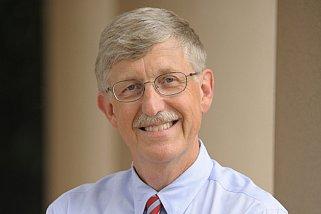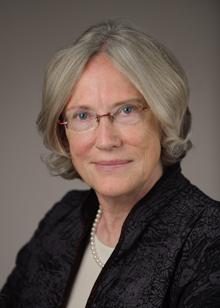On Saturday, more than 30,000 neuroscientists will travel from all over the world to attend the 45th annual Society for Neuroscience (SfN) meeting in Chicago, IL. SfN is always incredibly exciting. It will be busy – the rate at which neuroscience ideas and findings will be flowing will tax the capacity of our own neural networks! At Neuroscience 2015, investigators will present emerging science, learn from experts, forge collaborations, explore new tools and technologies, and advance careers. Most notable for me are the energetic and innovative discussions with students and young investigators. The 96-page program is jam packed with lectures, symposia, workshops, socials and satellite events that will take place from October 17th-21st at the McCormick Place Convention Center.

This year, NINDS is thrilled to co-sponsor two satellite events at SfN: How Can Understanding Protein Structure Help Us Unravel the Mysteries of Neurodegenerative Disease on Sunday evening and The BRAIN Initiative in 2015: Updates and Outreach town hall and reception on Tuesday evening. We hope these events will draw both established and early-career investigators. We need all hands on deck to tackle the essential basic science questions about structural biology and brain circuitry that may ultimately uncover new targets and therapies for neurological disorders. We are also excited for a Special Presentation from NIH Director Dr. Francis Collins on Embracing an Era of Unprecedented Advances in Neuroscience, which is one of three events at this year’s meeting that are free and open to the public.

Finally we are incredibly proud that SfN will also be presenting its highest award, the Ralph W. Gerard Prize in Neuroscience to our own Dr. Story Landis, former Director of NINDS. The prize honors outstanding scientists who have made significant contributions to neuroscience throughout their careers, and her dedication to public service and support for basic science, coupled with her own fundamental contributions to the understanding of developmental interactions required for synapse formation, have indeed had a remarkable impact on the field.
For those of you attending who may feel overwhelmed by the program of events, below are just a few highlights of some of the fascinating research that will be presented. Be sure to check out the full list of posters and presentations in the Neuroscience Meeting Planner.
Saturday afternoon:
- Pullen-Colon et al. present how they used wireless-controlled microLED lights to optogenetically control the activity of pain neurons in the spinal cords of mice, and show how they can turn pain circuits on and off in freely moving mice with the press of a button in poster L33.
- Floden and colleagues show how the location of deep brain stimulation in Parkinson’s patients leads to changes in cognition and mood during the Nanosymposium on Therapeutics of Parkinson’s Disease.
- Tan and colleagues share their discovery that mutant huntingtin protein obtained from the CSF of patients may cause clustering, which could allow physicians to monitor the progression of disease in poster C69.
- Goddeyne and colleagues present a rat model for repetitive concussions during childhood which suggests that concussion may cause the cerebral cortex to thin and the ventricles to expand in poster C95.
- Meng et al. show how deficiency of MeCP2 in glutamatergic neurons leads to severe neurological dysfunctions caused by altered neuronal activity in the Nanosymposium on Rett Syndrome.
Sunday:
- Lehrman and colleagues demonstrate that molecules that play a role in the brain’s immune responses against dead cells or debris appear to play a role in directing microglial pruning activities, and have identified an immune protective signal that prevents microglia from targeting needed synapses during the Nanosymposium on the Role of Immune System Molecules in Synaptic Plasticity.
- Chen and colleagues show that induced pluripotent stem cell technology can convert reactive glial cells surrounding the site of traumatic brain injury into neurons and other types of glia during the Nanosymposium on Neuronal Lineage Reprogramming.
- Svendsen et al. share how a nationwide team of scientists is studying the genomics, epigenomics, and transcriptomics of healthy and diseased human motor neurons derived from induced pluripotent stem cells that were grown in petri dishes in poster D33.
Monday:
- Palida and colleagues use high resolution imaging techniques to study how changes in the strength of synaptic activity may alter the structure of the perineuronal net in poster C28.
- Gattas et al. show how delivering tiny electric shocks to the orbital frontal cortex in epilepsy patients to induce hallucinations of tastes and smells could lead to deeper understanding of how this cortical structure processes these senses in poster O48.
- Rothstein and colleagues demonstrate that the C9ORF72 mutation may cause neurodegeneration in ALS and FTD by blocking importation of proteins in the nuclei of neurons in poster R18.
Tuesday:
- Macpherson and colleagues demonstrate how to label the activity of synapses with a rainbow of colors using genetically modified flies in the Nanosymposium on Molecular, Biochemical, and Genetic Techniques.
- Babu et al. share how diamond-coated microelectrodes can monitor neurotransmitter release during deep brain stimulation of Parkinson’s disease patients in poster D24.
- Thirugnanasambandam and colleagues use EEGs to study how carpal tunnel syndrome affects the brain in poster D36.
Wednesday:
- Chen-Plotkin and colleagues demonstrate that the frontotemporal dementia risk factor TMEM106B may interact with the C9ORF72 gene and cause problems with protein disposal in neurons in the Nanosymposium on Ataxias and Non-Huntington’s Disease Neurodegenerative Diseases.
- Wittig et al. present their research on the electrical activity of brain cells in epilepsy patients undergoing memory tests, explaining how their results may guide potential electrical stimulation treatments in poster Y30.
